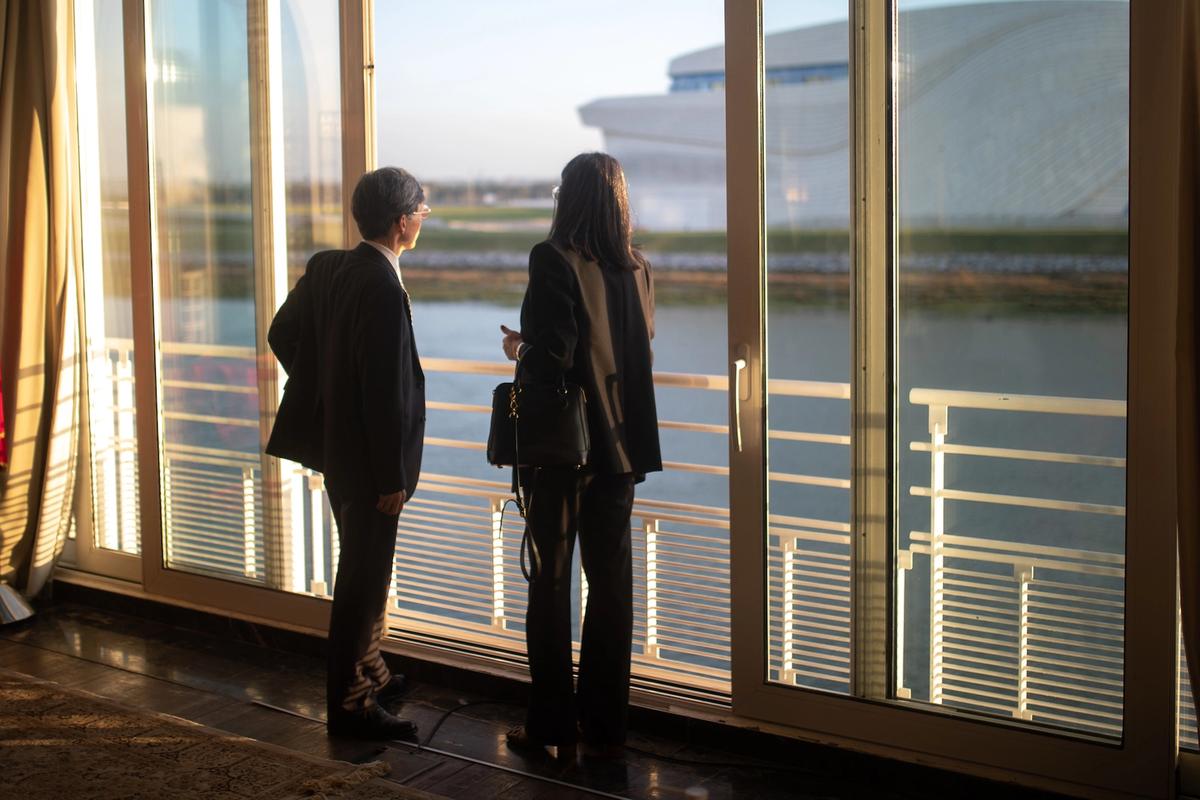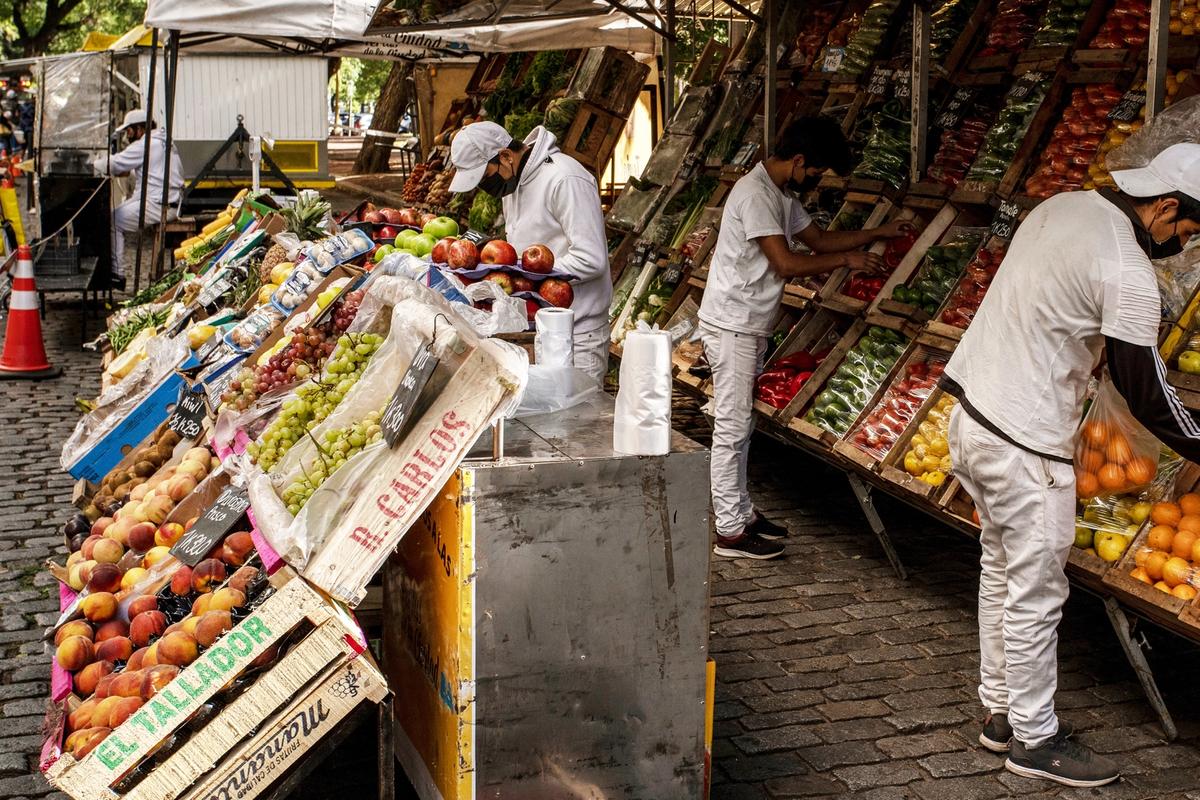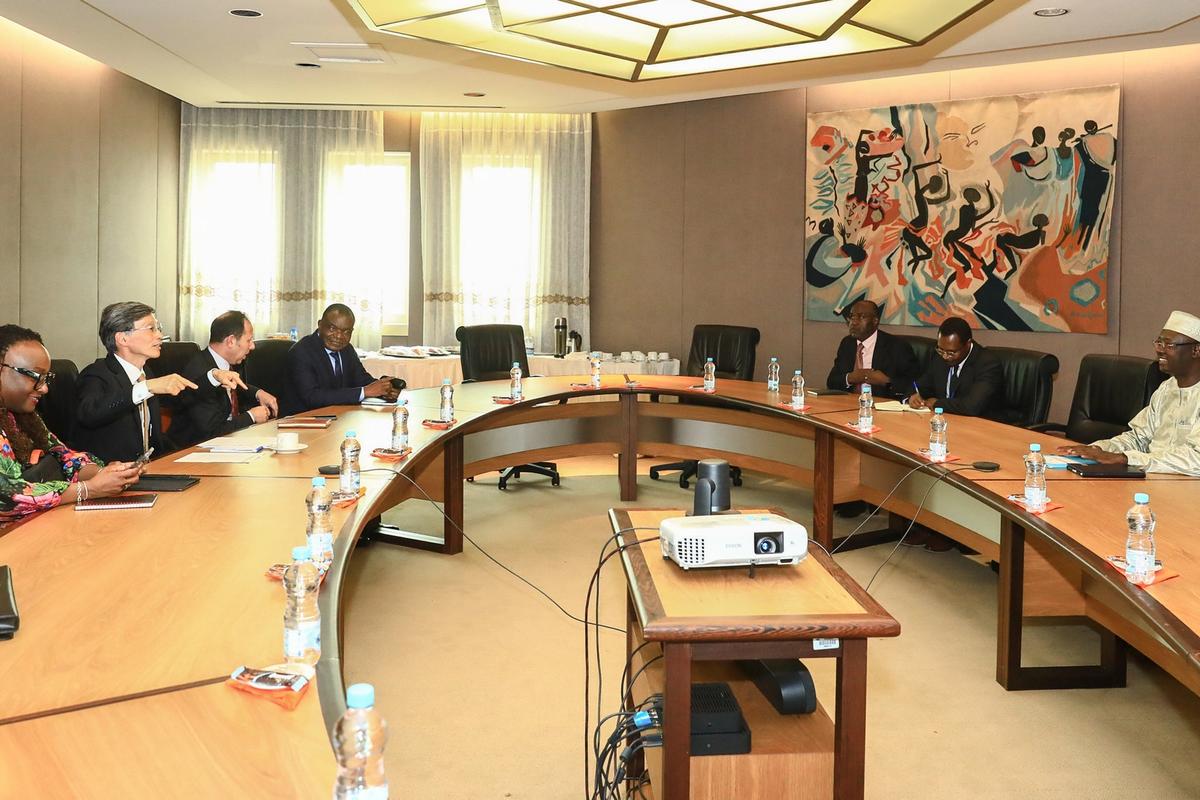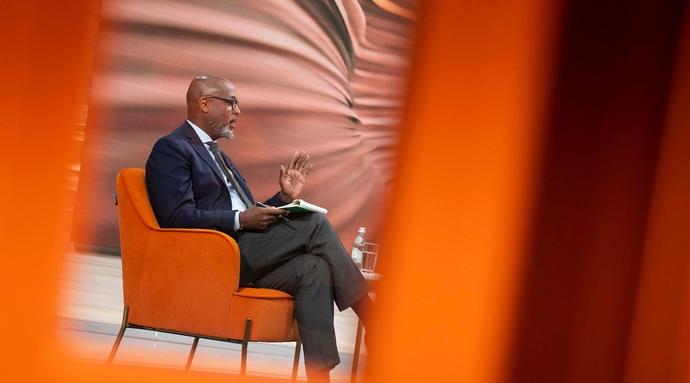
Morocco
Resources
Budget
In April 2022, the Executive Board authorized a net administrative budget for FY 2023 of $1,295 million, along with indicative budgets for FY 2024 and FY 2025. While continuing a long-standing tradition of fiscal prudence, Executive Directors approved a targeted budget augmentation framework to step up the IMF’s work on longer-term global challenges. The real net administrative budget is to increase on average by 2 percent each year during FY 2023 to FY 2025 relative to FY 2022, returning to a flat real budget trajectory thereafter, with a first allocation of $23 million in FY 2023. The gross administrative budget (excluding carryforward) stood at $1,562 million, which included $230 million in external reimbursements for capacity development activities.
The Board also approved a carryforward mechanism for externally funded spending to support the IMF’s structural transformation agenda. Total gross available resources for FY 2023 were $1,669 million, which included a $93 million IMF-financed carryforward and a $5 million externally financed carryforward. Capital funding of $78 million was approved for use over three years for building facilities and information technology capital projects.
Actual administrative expenditures in FY 2023 totaled $1,293 million, or 100 percent of the approved net budget and 101 percent for the general budget, excluding Offices of Executive Directors and the Independent Evaluation Office, with the use of some carryforward resources. Capital expenditures in FY 2023 totaled $96 million, including use of previously approved funding. Of this, $38 million was for direct capital spending on facilities, $45 million for IT-related expenditures, and $13 million for cloud-related licenses.
The FY 2023 budget supported the IMF’s efforts to address continued crisis needs related to near-term economic and financial challenges and to long-term drivers of global change. It also supported a shift to a hybrid work model and broader modernization of the organization. Savings from internal reprioritization and the pandemic-related travel repurposing were used to help finance these needs. While engagement with authorities remained partially virtual, demand for lending increased, with some members facing complex debt challenges. Financial Sector Assessment Programs and Article IV consultations have fully resumed, and capacity development delivery is closer to pre-pandemic levels. IMF strategies for climate change, digital money, and fragile and conflict-affected states that were approved for FY 2023 by the Executive Board are fully operational.
In April 2023, the Executive Board authorized a net administrative budget for FY 2024 of $1,411 million. This includes $29 million for the second annual augmentation allocation as well as a $7 million allocation for expenses related to the Annual Meetings in Morocco.
Table 3.1
Budget by Major Expenditure Category, FY2022–24
(millions of US dollars)
| FY 2022 Budget | FY 2022 Outturn | FY 2023 Budget | FY 2023 Outturn | FY 2024 Budget | |
|---|---|---|---|---|---|
| Net administrative budget | 1,214 | 1,180 | 1,295 | 1,294 | 1,411 |
| Annual augmentation | - | - | 23 | - | 29 |
| Overseas Annual Meetings | - | - | - | - | 7 |
| Receipts | 246 | 166 | 268 | 229 | 295 |
| RST Externally financed | - | - | - | - | 5 |
| Externally financed¹ | 210 | 141 | 230 | 195 | 250 |
| Gross administrative budget (excl. carryforward) | 1,460 | 1,346 | 1,562 | 1,522 | 1,706 |
| FY23 Fund-financed carryforward² | 102 | - | 93 | - | 87 |
| FY23 externally financed carryforward | - | - | 5 | - | 5 |
| Other Fund-financed transitional resources³ | 8 | - | 9 | - | 9 |
| Total gross available resources | 1,569 | 1,346 | 1,669 | 1,522 | 1,807 |
| Capital budget | 79 | 90 | 78 | 96 | 108 |
| Building facilities | 24 | 22 | 19 | 38 | 47 |
| HQ1 renewal | - | -1 | - | - | - |
| Information technology | 46 | 60 | 44 | 45 | 41 |
| Cloud capital equivalent | 10 | 9 | 15 | 13 | 20 |
| Net administrative budget in mil. of FY23 dollars | 1,272 | 1,236 | 1,295 | 1,294 | 1,328 |
| Overseas Annual Meetings budget in mil. of FY23 dollars | - | - | - | - | 7 |
Source: IMF, Office of Budget and Planning.
Note: Figures may not add to totals due to rounding.
¹ Excludes externally financed carryforward.
² Based on end-year financial books.
³ Other transitional resources indicate available resources from OED/IEO excess underspend above their carryforward limits.
Income model, charges, remuneration, burden sharing, and total comprehensive income
Income Model
The IMF generates income primarily through its lending and investing activities (see Figure 3.1). Lending income is derived from the charges levied on the use of credit from the GRA, service charges, and commitment fees. In addition, the use of IMF credit is subject to surcharges under certain circumstances, as noted in Part Two. The IMF’s income model also relies on investment income generated from assets in the Fixed-Income and Endowment Subaccounts of the IMF’s Investment Account and from reimbursements. Given the public nature of the funds, the IMF’s investment policy includes, among other things, a careful assessment of acceptable levels of risk, as well as safeguards to minimize actual or perceived conflicts of interest. In January 2022, the Executive Board approved an updated investment strategy, which includes responsible-investing principles related to environmental, social, and governance considerations. These principles were implemented in FY 2023.
Figure 3.1
Income Model

Source: IMF, Finance Department.
Note: Areas shaded in green represent elements added to the income model in 2008.
¹ As of April 28, 2023, the membership had not adopted the dividend policy.
Charges
Reflecting high levels of lending activity, the IMF’s main source of income continues to be charges levied on outstanding credit. The basic rate of charge (that is, the interest rate) on IMF financing comprises the SDR interest rate plus a fixed margin expressed in basis points, as discussed in Part Two. In April 2023, the Executive Board maintained the margin for the rate of charge at 100 basis points for the period through April 2024.
The IMF also levies surcharges on large amounts of credit that exceed a defined threshold relative to a member’s quota (level-based surcharges), and they are higher when this threshold has been exceeded for a defined period of time (time-based surcharges) (see Table 2.1).
In addition to charges and surcharges, the IMF levies service charges, commitment fees, and special charges. A service charge of 0.5 percent is levied on each drawing from the GRA. A commitment fee is charged at the beginning of each 12-month period on amounts available for drawing under GRA arrangements during that period. The fee is refundable (except in the case of arrangements under the Short-Term Liquidity Line for which the fee is nonrefundable) once a drawing takes place. The IMF also levies special charges on charges that are past due, but only for the first six months a member is in arrears.

Remuneration and Interest on Borrowing
On the expenditure side, the IMF pays interest (remuneration) to members on their creditor positions in the GRA (known as “remunerated reserve tranche positions”). The basic rate of remuneration is equal to the SDR interest rate. The IMF also pays interest at the SDR interest rate on outstanding borrowing under the New Arrangements to Borrow (NAB; see “Financing”).
Burden Sharing
The rates of charge and remuneration can be adjusted under a burden-sharing mechanism that distributes the cost of overdue financial obligations equally between debtor and creditor members.
Total Comprehensive Income
The IMF’s total comprehensive income in FY 2023 was SDR 1.7 billion ($2.3billion), reflecting primarily income from the high levels of lending activity, investment income, and gains and losses stemming from the remeasurement of the assets and liabilities of the IMF’s employee benefit plans, in accordance with International Financial Reporting Standards (International Accounting Standard 19, “Employee Benefits”).

Arrears to the IMF
Since June 2021, when Sudan cleared its arrears to the IMF, the IMF has had no remaining cases of protracted arrears. To prevent and resolve arrears, the IMF has in place a strengthened cooperative strategy on arrears. This strategy consists of three elements: prevention, intensified collaboration, and remedial measures. Prevention is the first line of defense against the emergence of new cases of arrears and includes, among other things, IMF surveillance of members’ economic policies, policy conditionality attached to the use of IMF resources, assessment of members’ capacity to repay, safeguards assessments of central banks of members receiving IMF resources, and technical assistance by the IMF. Intensified collaboration includes staff-monitored programs to help members in arrears to establish a track record on policies and payments, leading to eventual clearance of arrears to the IMF. Last, remedial measures are applied—using an escalating timetable—to members with overdue financial obligations that do not actively cooperate with the IMF to resolve their arrears problems.
Financing
The IMF provides financing to its members through four channels, all of which serve the common purpose of transferring reserve currencies to member countries: regular (nonconcessional) lending from the GRA, concessional lending from the PRGT, and longer-term lending from the RST (all discussed in Part Two), as well as via the SDR Department, through which members can exchange their SDR holdings for reserve currencies.
The most salient feature of the IMF’s financial structure is that it is continuously evolving. The IMF has introduced and refined a variety of lending facilities and policies over the years to address changing conditions in the global economy and the specific needs and circumstances of its members.

Quotas: Where the IMF Gets Its Money
The IMF’s 190 member countries provide resources for loans primarily through their payment of quotas, which also set their voting rights. Multilateral borrowing and bilateral borrowing serve as second and third lines of defense in times of crisis. These resources give the IMF access to about $1 trillion in nonconcessional lending firepower to support members. Concessional lending, affordable long-term financing for longer-term structural challenges, and debt relief for low-income countries are financed through separate contribution-based trust funds.
Each member is assigned a quota based broadly on its position in the world economy. IMF quotas total SDR 476 billion (about $641 billion)¹. The value of the SDR, the IMF’s unit of account, is based on a basket of currencies (see “Special drawing right” section).
IMF quotas are also reviewed regularly, normally at least every five years. The 16th General Review of Quotas, which is currently underway and is expected to be completed no later than December 15, 2023, offers an opportunity to assess the overall adequacy of quotas as well as the adequacy of their distribution among IMF member countries. The Executive Board issued two progress reports to the Board of Governors on the 16th General Review during FY 2023, reporting on ongoing discussions. The review is building on the governance reforms of the 2010 review (14th General Review of Quotas), including efforts to protect quotas and voting shares of the poorest members. The current formula for determining quotas, which was approved in 2008 and has been used as a guide, is also under review.


Quota Payments
The conditions for implementing the quota increases approved under the 14th General Review were met on January 26, 2016. This resulted in a doubling of aggregate quota resources, to SDR 477 billion (about $643 billion) from about SDR 238.5 billion (about $321 billion). As of April 30, 2023, all but 2 of the 190 members had made their quota payments, accounting for more than 99 percent of the total quota increases, and total quotas stood at SDR 476 billion (about $641 billion).
¹ Two member countries, Eritrea and Syria, have not yet consented to their proposed quota increases under the 14th General Review of Quotas. Once these countries consent to, and pay for, their respective quota increases, IMF quotas will total SDR 477 billion.
Borrowing by the IMF
As noted, the IMF is a quota-based institution. However, borrowed resources continue to play a key role in supplementing quota resources through the New Arrangements to Borrow (NAB) and the bilateral borrowing agreements (BBAs), serving respectively as a second and third line of defense after quotas.
The NAB is a set of credit arrangements with 40 participants contributing an aggregate amount of SDR 364 billion. The aggregate size of the NAB was doubled to about SDR 361 billion on January 1, 2021, and a new NAB period was set through the end of 2025. NAB resources can be activated when the IMF’s resources need to be supplemented to forestall or cope with an impairment of the international monetary system. Activation requires the consent of participants representing 85 percent of total credit arrangements of participants eligible to vote, as well as the approval of the Executive Board. The NAB was activated 10 times between April 2011 and February 2016, the most recent activation.
As noted, BBAs are intended to serve as a third line of defense after quotas and the NAB. The current (2020) round of BBAs has been in effect since January 1, 2021, with an initial term through December 31, 2023, which may be extended by one more year. As of April 30, 2023, 42 bilateral creditors had committed under their 2020 BBAs to provide the IMF with a total credit amount equivalent to about SDR 140 billion. Resources under BBAs can be activated only if the amount of the IMF resources otherwise available for financing has fallen below a threshold of SDR 100 billion and either the NAB has been activated or there are no available uncommitted NAB resources. Activation of BBAs requires approval by bilateral creditors representing 85 percent of the total credit amount committed.
Special Drawing Right
The SDR is an international reserve asset the IMF created in 1969 to supplement its member countries’ official reserves. It serves as the unit of account of the IMF and some other international organizations. The SDR is neither a currency nor a claim on the IMF. Rather, it is a potential claim on the freely usable currencies of IMF members. IMF members that are participants in the SDR Department (currently all members) may exchange SDRs for freely usable currencies.
The SDR’s value is currently based on a basket of five currencies: the US dollar, the euro, the Chinese renminbi, the Japanese yen, and the British pound. The currencies included are reviewed periodically; the most recent review of the valuation of the SDR basket was concluded in May 2022, and the updated basket went into effect August 1, 2022.
As of April 30, 2023, a total of SDR 660.7 billion (equivalent to about $890 billion) had been allocated to members, including the August 2021 allocation of SDR 456.5 billion, the largest allocation of SDRs in history, in the context of the COVID-19 pandemic. This SDR allocation provided additional liquidity to the global economic system—supplementing countries’ foreign exchange reserves and reducing their reliance on more expensive domestic or external debt. Countries could choose to use the space provided by the SDR allocation to support their economies and step up the fight against the crisis.
To amplify the benefits of this allocation, the IMF is encouraging voluntary channeling of SDRs from countries with strong external positions to countries most in need. Some members have already pledged to lend their SDRs as loan resources or to generate subsidy contributions to the PRGT, which provides concessional loans to low-income countries. Furthermore, the RST, which became operational in October 2022, is primarily funded by, and intended to use, channeled SDRs and provides affordable longer-term financing to support countries undertaking reforms to reduce risks, including those related to climate change, and for pandemic preparedness. In addition, the IMF has provided technical advice on the use of SDRs to multilateral development banks, which are discussing with potential contributors their options to receive channeled SDRs. In February 2023, the IMF approved five new multilateral development banks as prescribed SDR holders.

Read Next
Accountability
The IMF is accountable to its 190 member countries and has a system of checks and balances to ensure accountability, ranging from internal and external audits to risk management and evaluation of its policies and operations. Similarly, the IMF staff is expected to observe the highest ethical and workplace standards of conduct.